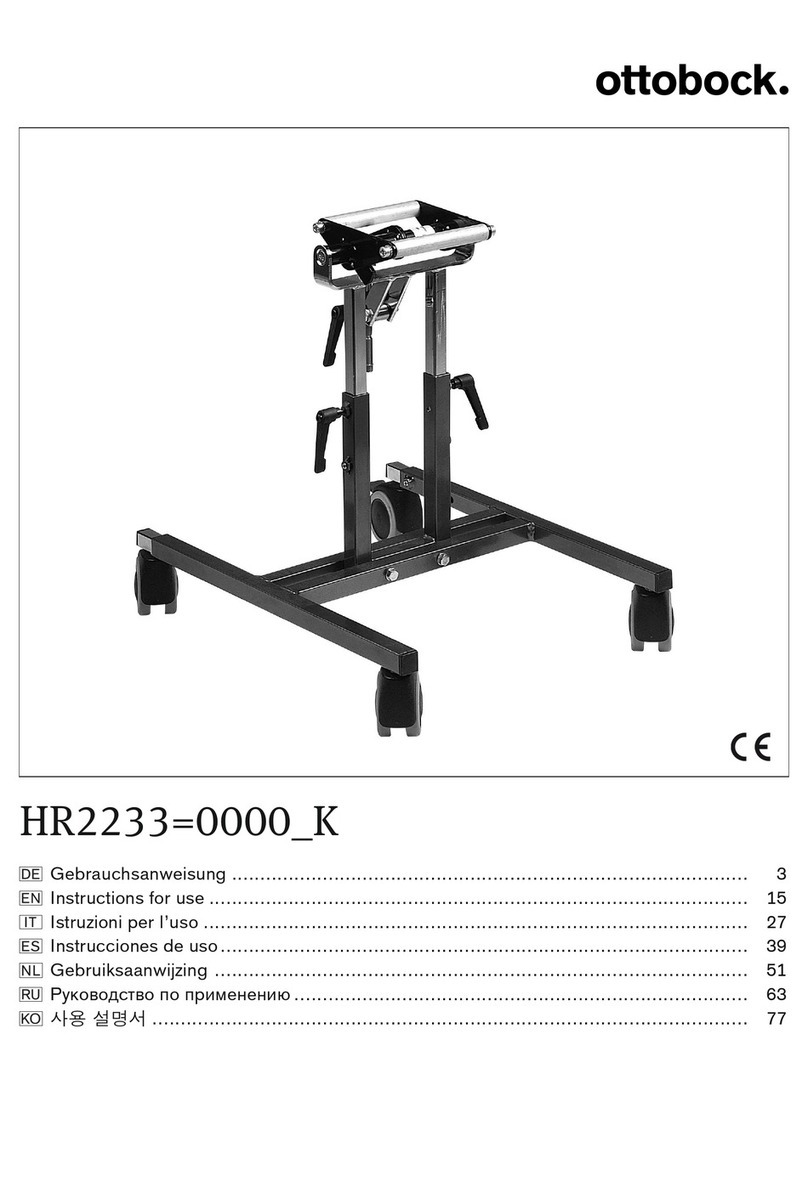
Anschlagstift montieren
>Voraussetzung: Der Fußbügel ist montiert.
1) Den Anschlagstift in den Einschraubkanal einsetzen (siehe Abb.2, siehe
Abb.3).
2) Den Gewindestift in den Einschraubkanal einschrauben und die Winkel
stellung des Orthesengelenks einstellen.
3) Die Gewinde der Schraubverbindungen mit einem entfettenden Reiniger
reinigen und mit Loctite 241 sichern.
Schiene montieren
>Benötigte Werkzeuge: Bohrer 624S14=4, Senker 726S9=90x11.5.
1) Die Schiene in den Einsteckbereich des Orthesengelenks einlegen und
die Position des Bohrlochs markieren.
2) Die Bohrung mit dem Bohrer 624S14* einbringen.
3) Die Bohrung mit dem Senker 726S9* entgraten.
4) Die Schiene im Einsteckbereich mit dem Gewindestift 506G21* fixieren.
INFORMATION: Zur finalen Montage werden die Schienen im Ein
steckbereich eingeklebt.
Schienen einkleben
Benötigte Materialien: Spezialklebstoff 636W28*, entfettender Reiniger
Aus Stabilitätsgründen ist die Verklebung der Schienen in den Einsteckbe
reichen erforderlich.
1) Die Verbindungsflächen mit einem entfettenden Reiniger reinigen.
2) Den Spezialklebstoff auf die Verbindungsflächen auftragen.
3) Die Schienen einsetzen.
4) Mit den beiliegenden Schrauben fixieren.
5) Mindestens 4Stunden aushärten lassen.
INFORMATION: Die endgültige Festigkeit ist nach 16Stunden er
reicht.
Schiene demontieren
1) Den Gewindestift herausschrauben.
2) Die Schiene herausschlagen und entnehmen.
17PA1*
Durch die individuelle Kombination von Kugel, Anschlagstift und Druckfeder
mit den Gewindestiften werden die Orthesenknöchelgelenke 17PA1* an die
Bedürfnisse des Patienten angepasst.
6 Reinigung
Reinigen Sie das Produkt umgehend nach Kontakt mit:
9






























